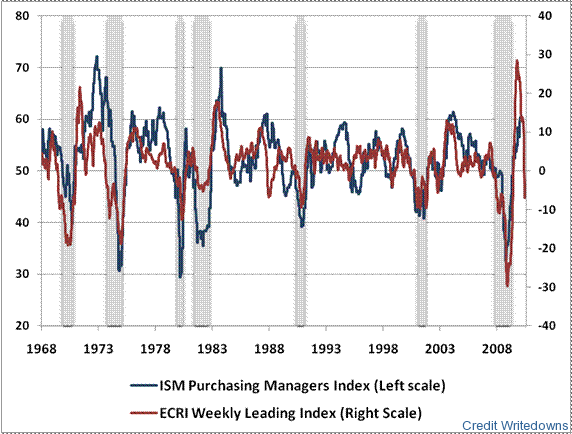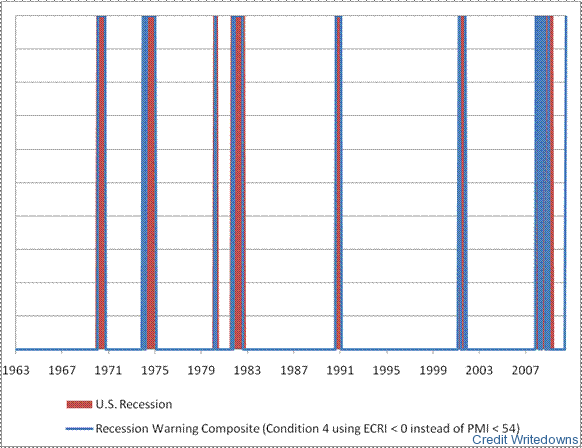Hussman: A Double Dip Recession is Coming
The following is an excerpt of the Weekly Market Commentary By John Hussman.
Based on evidence that has always and only been observed during or immediately prior to U.S. recessions, the U.S. economy appears headed into a second leg of an unusually challenging downturn.
A few weeks ago, I noted that our recession warning composite was on the brink of a signal that has always and only occurred during or immediately prior to U.S. recessions, the last signal being the warning I reported in the November 12, 2007 weekly comment Expecting A Recession. While the set of criteria I noted then would still require a decline in the ISM Purchasing Managers Index to 54 or less to complete a recession warning, what prompts my immediate concern is that the growth rate of the ECRI Weekly Leading Index has now declined to -6.9%. The WLI growth rate has historically demonstrated a strong correlation with the ISM Purchasing Managers Index, with the correlation being highest at a lead time of 13 weeks.
Taking the growth rate of the WLI as a single indicator, the only instance when a level of -6.9% was not associated with an actual recession was a single observation in 1988. But as I’ve long noted, recession evidence is best taken as a syndrome of multiple conditions, including the behavior of the yield curve, credit spreads, stock prices, and employment growth. Given that the WLI growth rate leads the PMI by about 13 weeks, I substituted the WLI growth rate for the PMI criterion in condition 4 of our recession warning composite. As you can see, the results are nearly identical, and not surprisingly, are slightly more timely than using the PMI. The blue line indicates recession warning signals from the composite of indicators, while the red blocks indicate official U.S. recessions as identified by the National Bureau of Economic Research.
The blue spike at the right of the graph indicates that the U.S. economy is most probably either in, or immediately entering a second phase of contraction. Of course, the evidence could be incorrect in this instance, but the broader economic context provides no strong basis for ignoring the present warning in the hope of a contrary outcome. Indeed, if anything, credit conditions suggest that we should allow for outcomes that are more challenging than we have typically observed in the post-war period.
To find out what Hussman thinks this means for shares, click the link below. Hint:
"Put bluntly, I believe that the economy is again turning lower, and that there is a reasonable likelihood that the U.S. stock market will ultimately violate its March 2009 lows before the current adjustment cycle is complete."
Source: Recession Warning – Hussman Funds


Comments are closed.